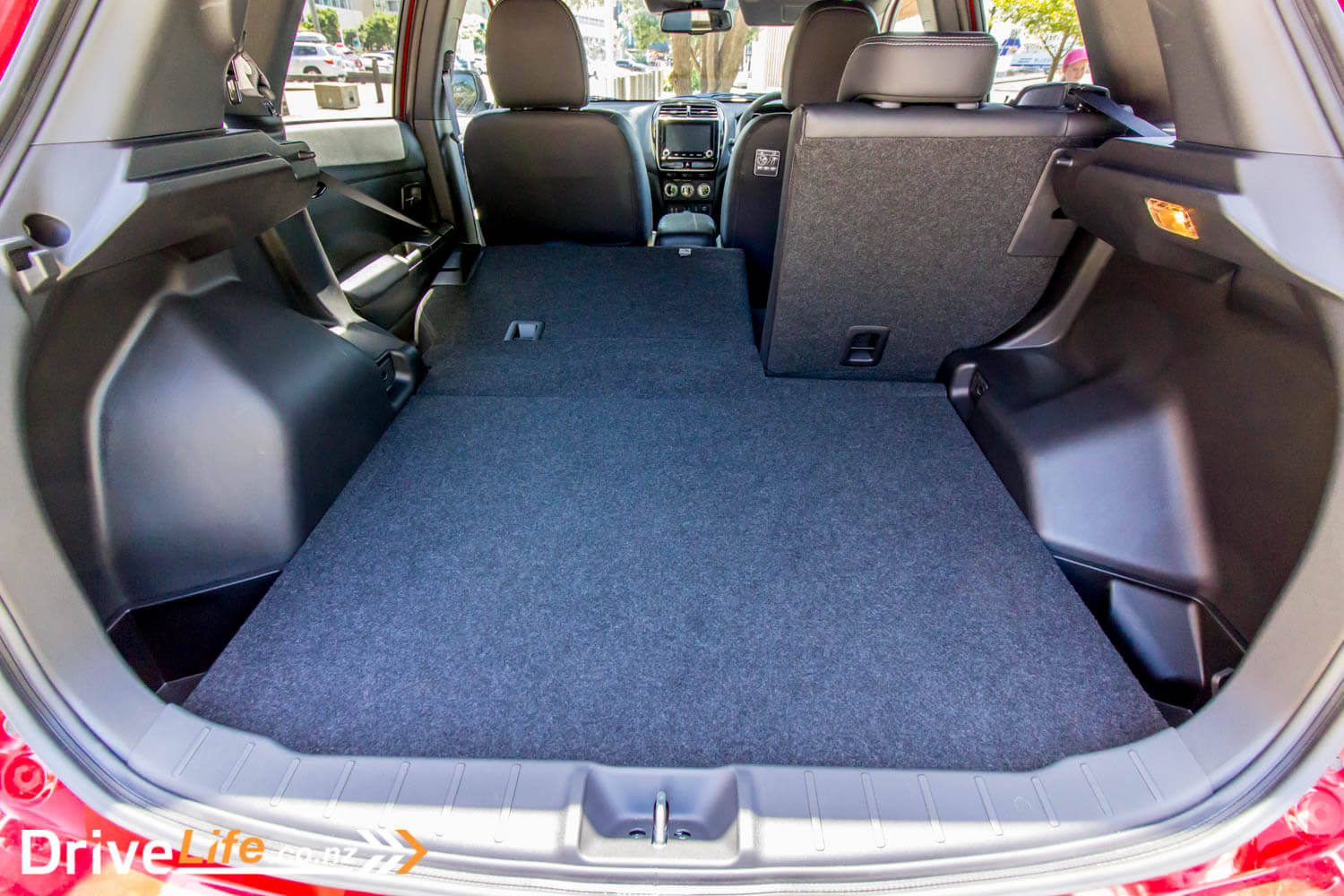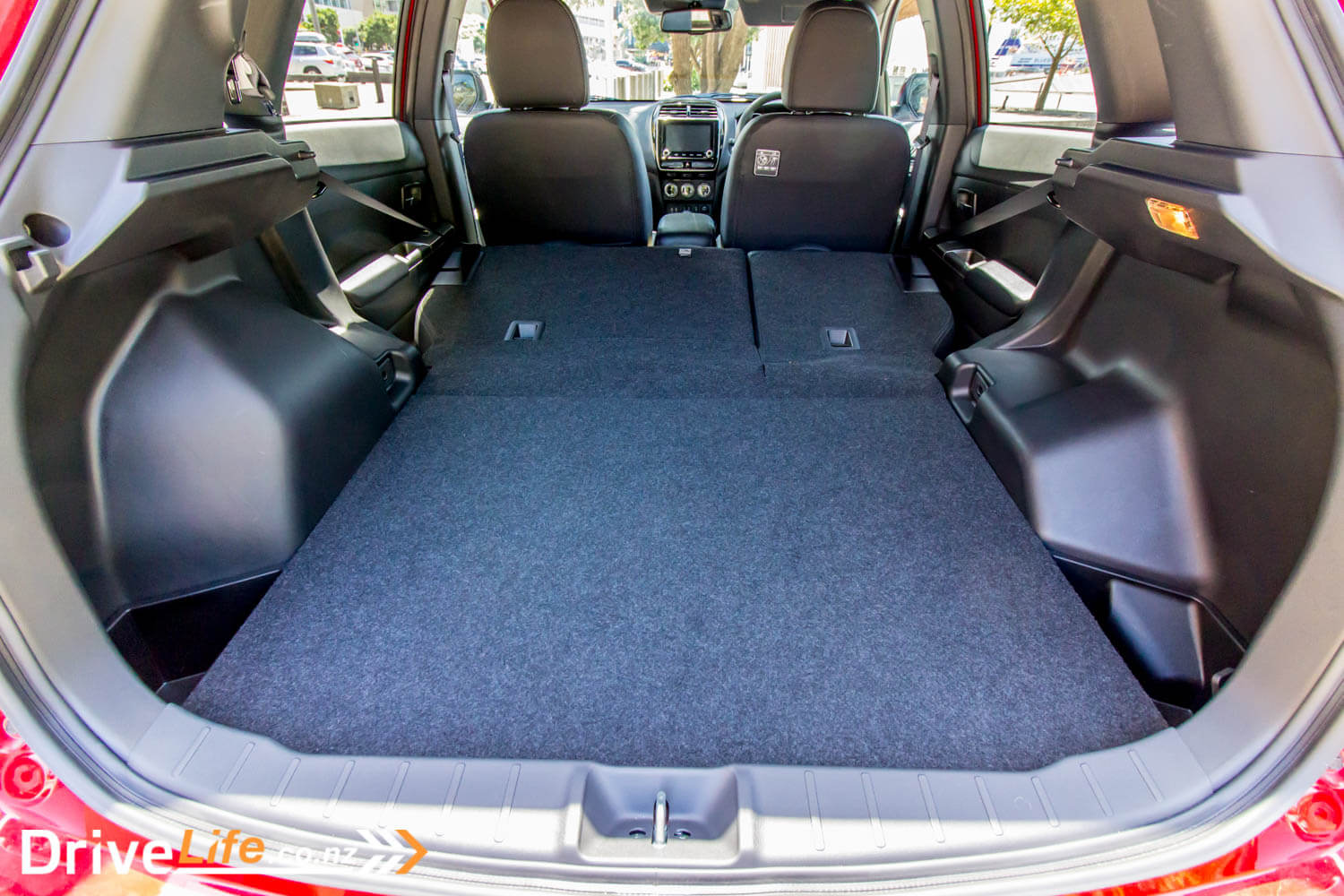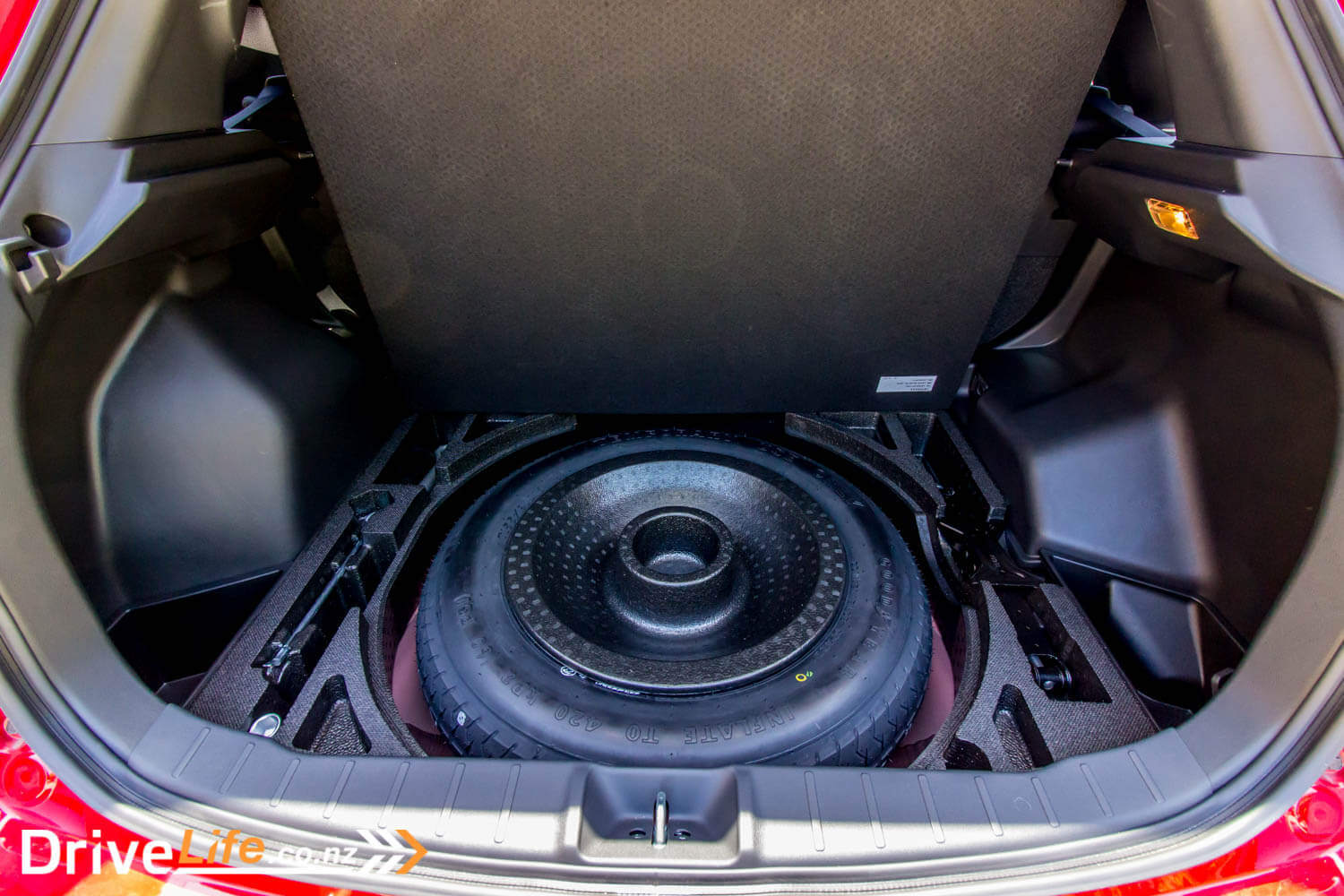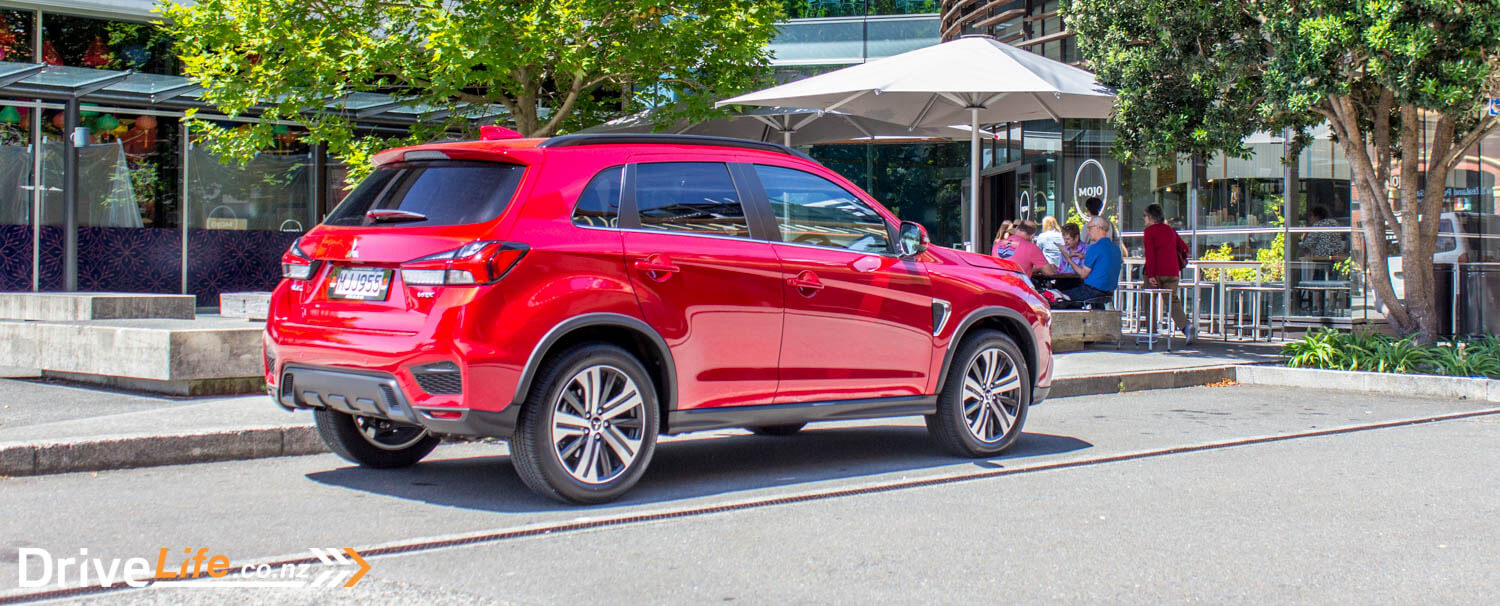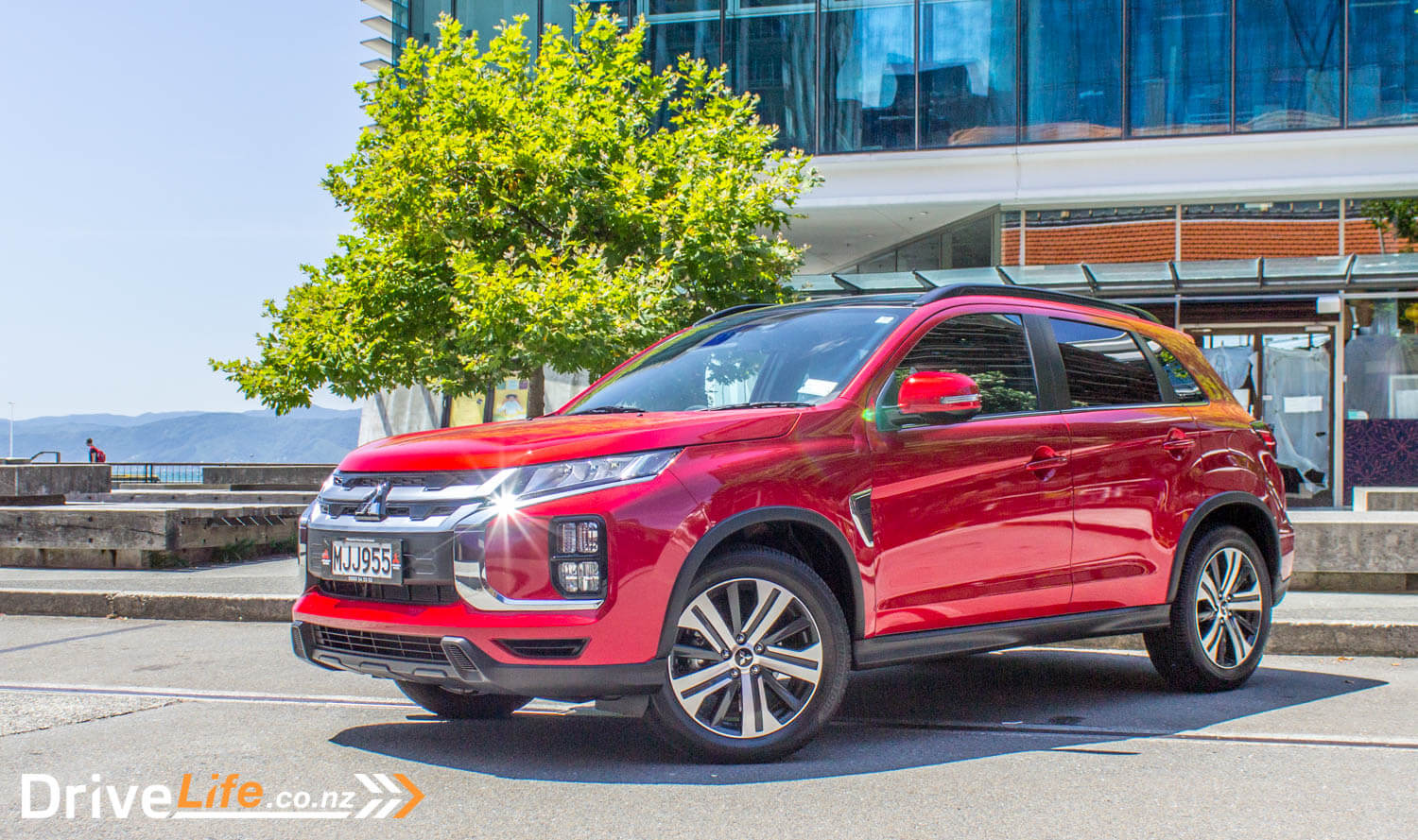It’s regularly the biggest selling small SUV in New Zealand. Sharp pricing, good features and well-produced TV ads all help the Mitsubishi ASX to climb the small SUV charts.
There’s been no chassis updates to this model, the changes are based around the front and rear facelift, a switch of tyres to help reduce road noise, an update to the interior including a larger touchscreen, removal of AWD and diesel engines, and the fitment of a 2.4-litre engine in the top-spec VRX.
The old model felt a bit dated, in the look and the drive. So what’s the new model really like? Mitsubishi sent us a top-spec VRX model for a week to give you just that answer.
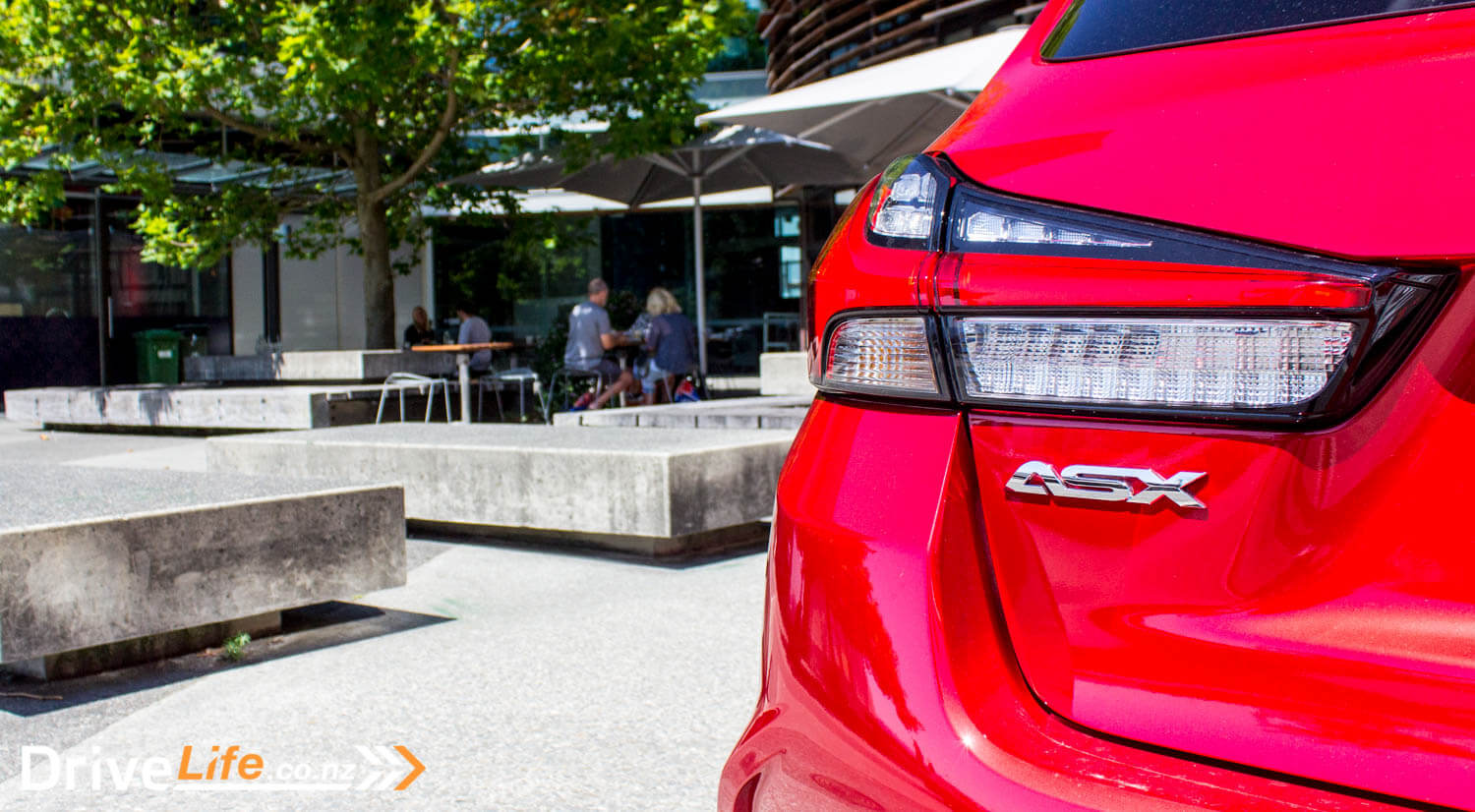
What’s In The 2020 Mitsubishi ASX Range?
There’s three models of ASX to choose from; the $29,990 base 2.0-litre LS, followed by the XLS at $31,990 with the same engine, and then the top-model – the VRX at $34,990. The VRX runs a 2.4-litre, four-cylinder petrol engine, which has almost the same power and torque as the bigger Outlander. I see in our 2016 review of the ASX VRX, the price was just over $40K.
The 2.0-litre engine will give you 112kW of power and 200Nm of torque, while the 2.4 manages 125kW and 225Nm. The two lower models come with a CVT automatic transmission, while the 2.4 has a CVT as well, it also has a 6-speed sports mode with paddle shifters.
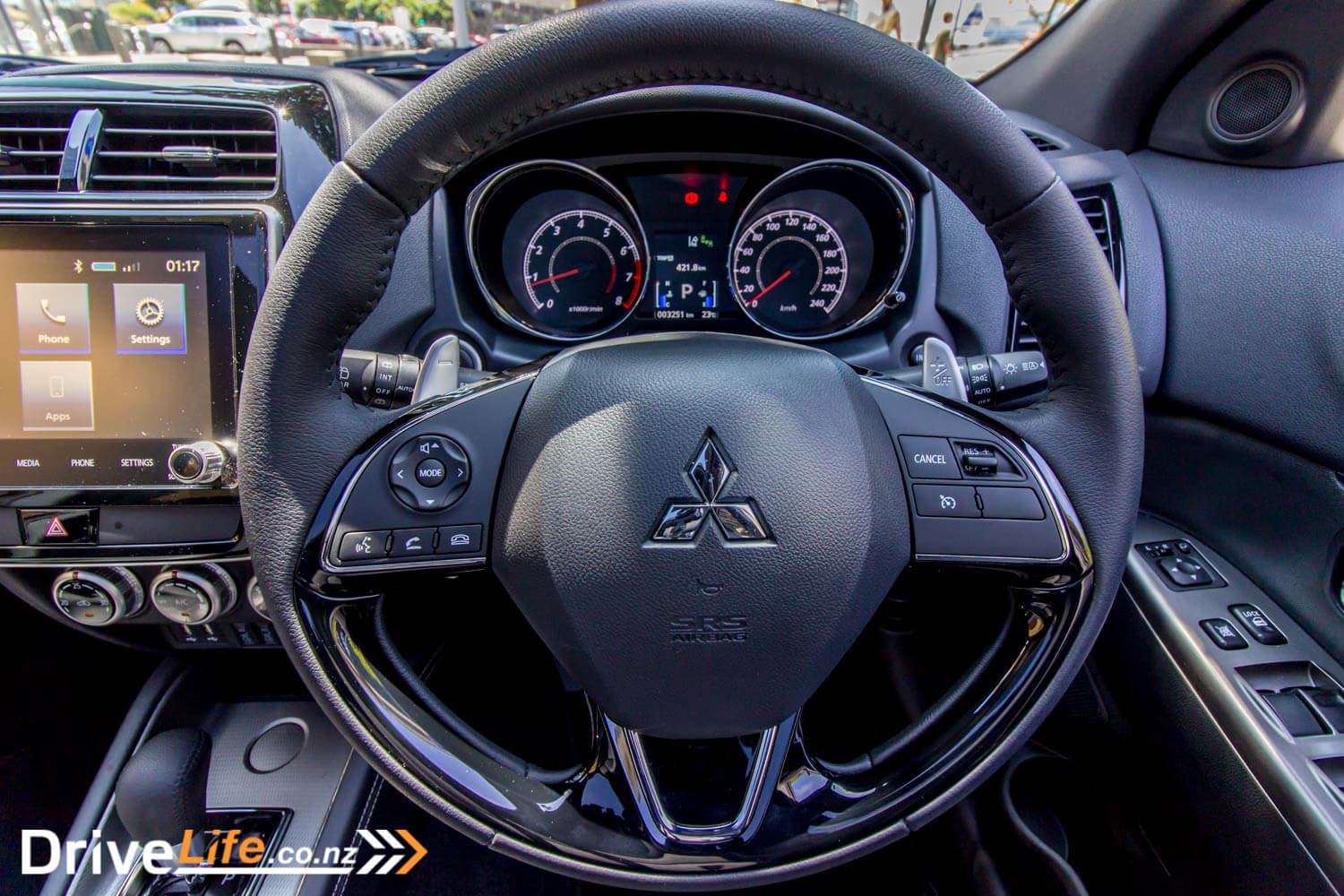
Gone are the AWD or diesel engine options that the previous ASX offered.
Standard equipment is pretty reasonable across the range. There’s 18” alloys standard, an 8” touchscreen with pinch and zoom, Apple CarPlay and Android Auto, reversing camera, keyless entry, auto LED headlamps, auto wipers, DAB audio with 4 speakers, manual headlamp levelling, auto dimming interior mirror, climate AC. XLS adds forward collision mitigation, blind spot warning with lane change assist, rear cross traffic alert, automatic high beams, rear parking sensors and sports fabric seat trim.
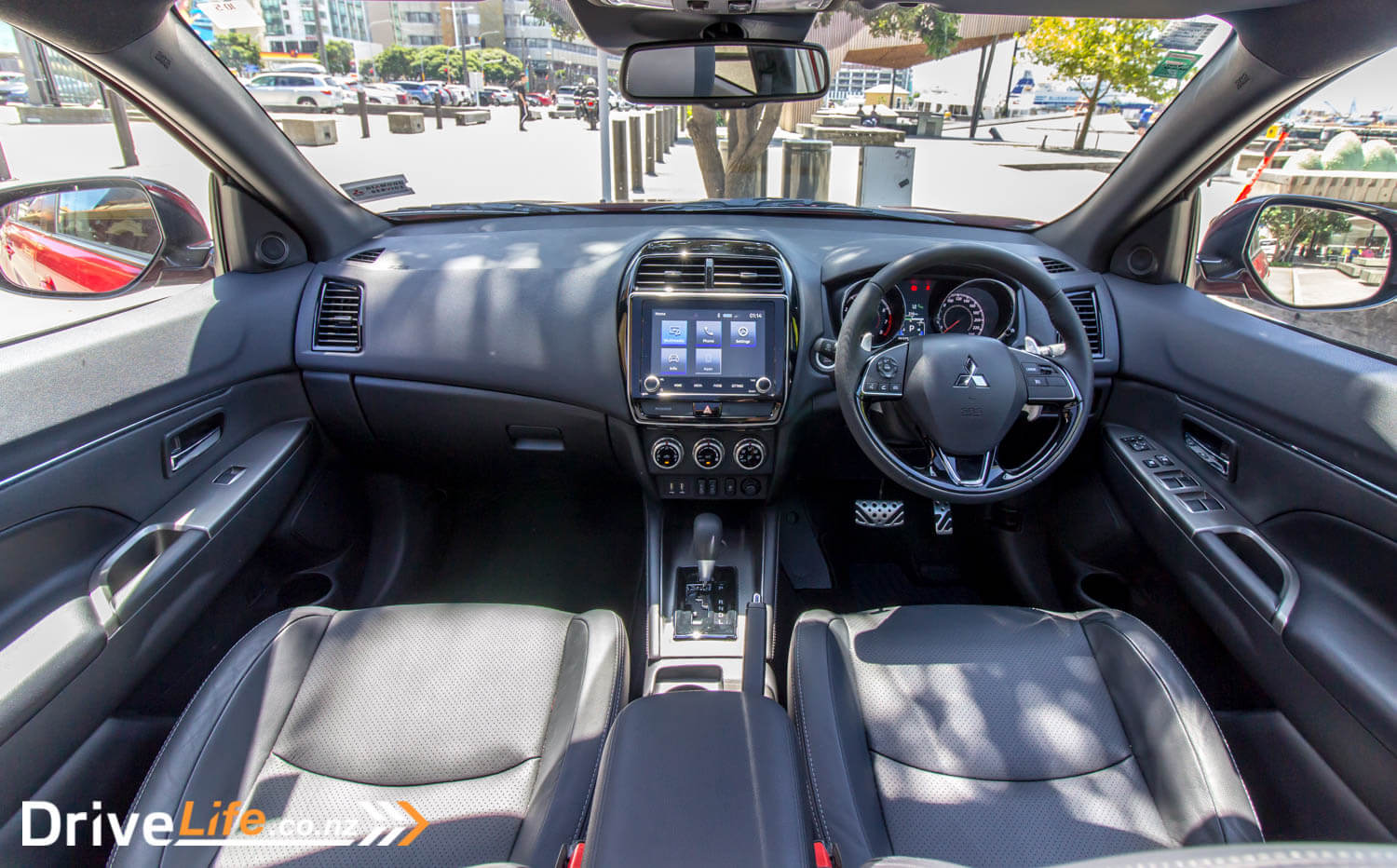
The top spec VRX then adds the bigger motor, the better CVT, panoramic sunroof, leather seats, automatic headlamp levelling, heated front seats with electric driver’s seat, keyless start, 6-speaker audio, chrome exterior accents and a satin-chrome and piano black grille.
You can choose from one of seven colours. There’s 2 new colours; Red Diamond (a $500 option) replaces Rose Red, and new colour, Sunshine Orange.
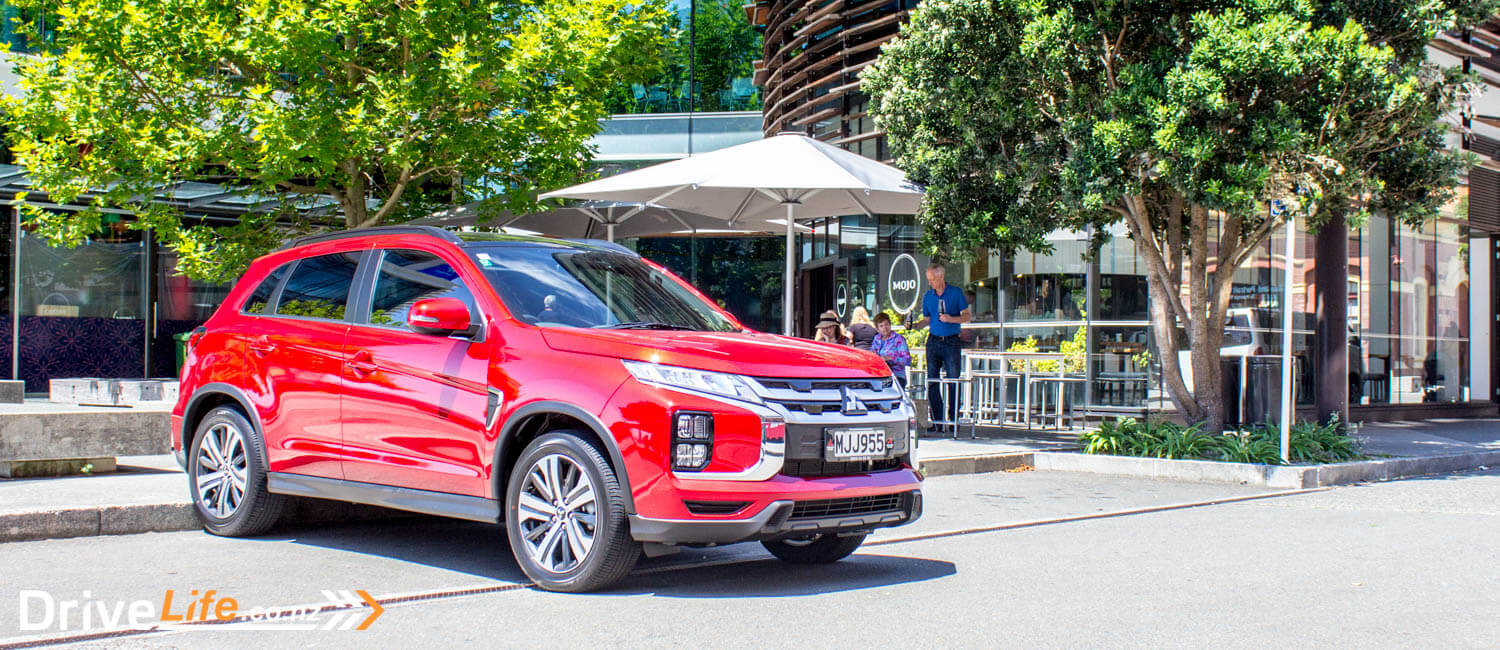
You can read more about the ASX on Mitsubishi New Zealand’s website.
Note that while Recommended Retail Prices (RRP) are shown on Mitsubishi’s website, these are Recommended Special Prices (RSP). You could call them a long-term special price.
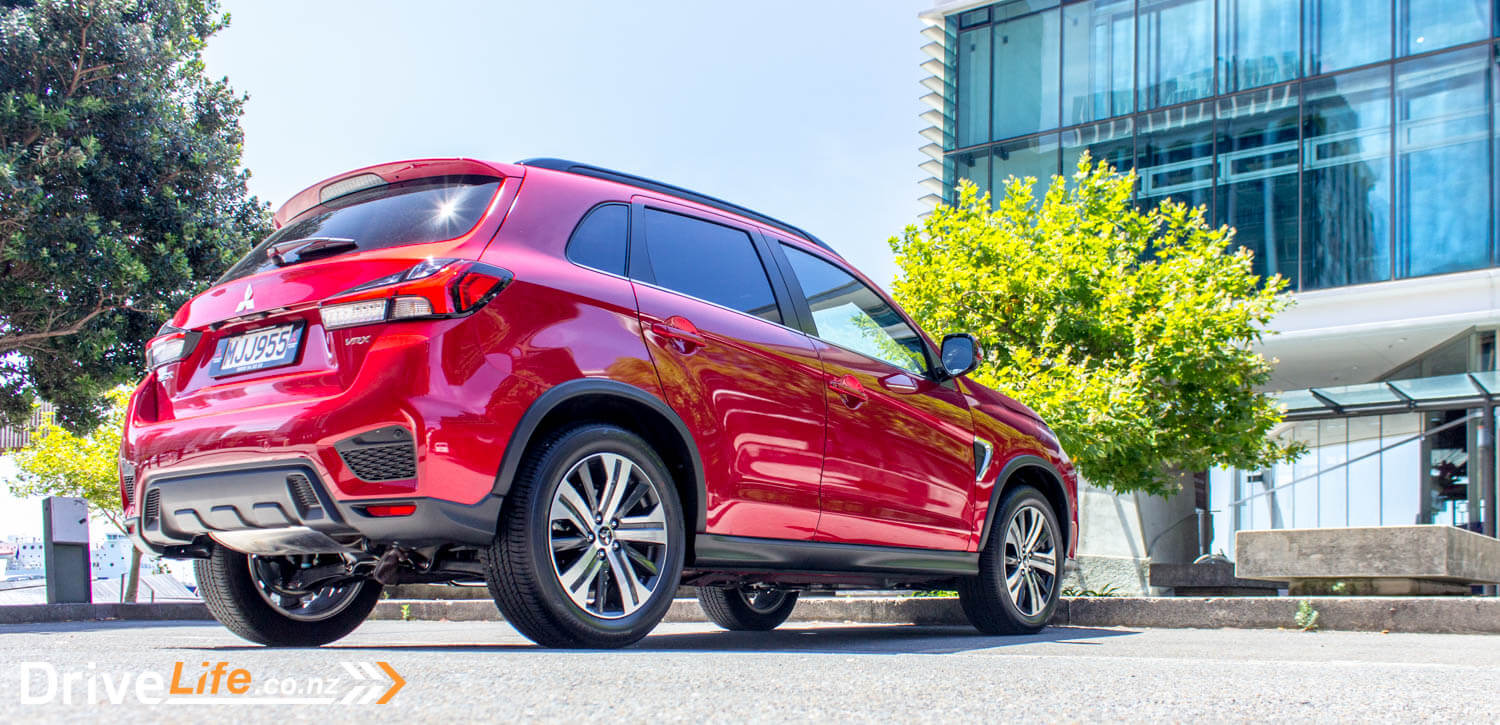
First Impressions of The 2020 Mitsubishi ASX VRX
Mitsubishi have really taken on a completely different design than the 2019 model year, but this does line the 2020 ASX up with the latest family look. It looks big though, and you can certainly see the Outlander, Eclipse Cross and even the Triton on the front of the car. That’s not a bad thing, and it’s surely modernised at least the front of the car from what it was. There’s a hint of the Kia Sportage XX Line at the front, with those four lamps on the corners of the bumper. The top two are turn signals, while the lower two are LED fog lamps. Headlights across all models are LED, and standard as well are LED daytime running lamps (DRLs) which are just below the headlights.
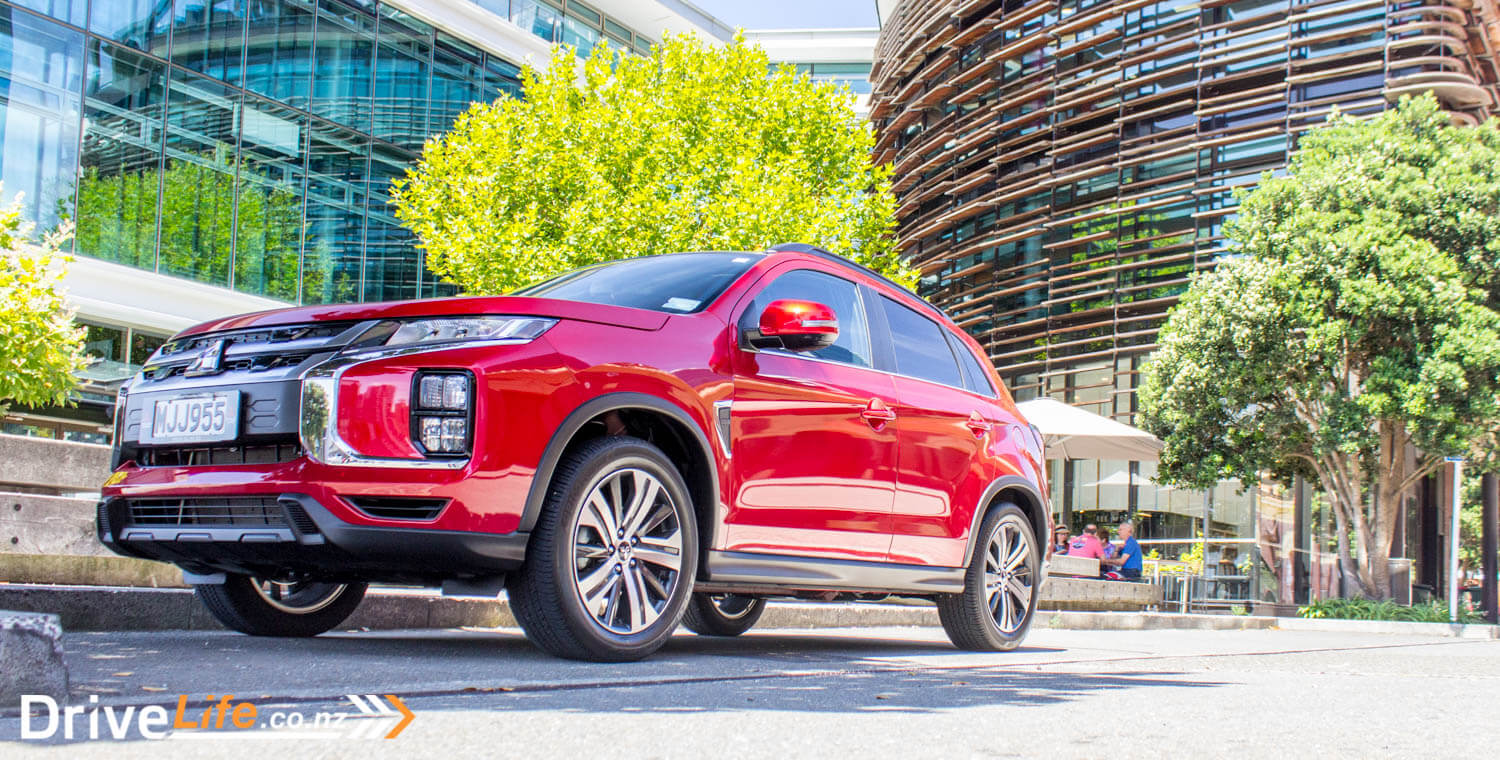
The rear has come in for an update too, not looking too much different but again, fresh and modern. There’s LED stop and taillights back there, and even the reversing lamps are LED.
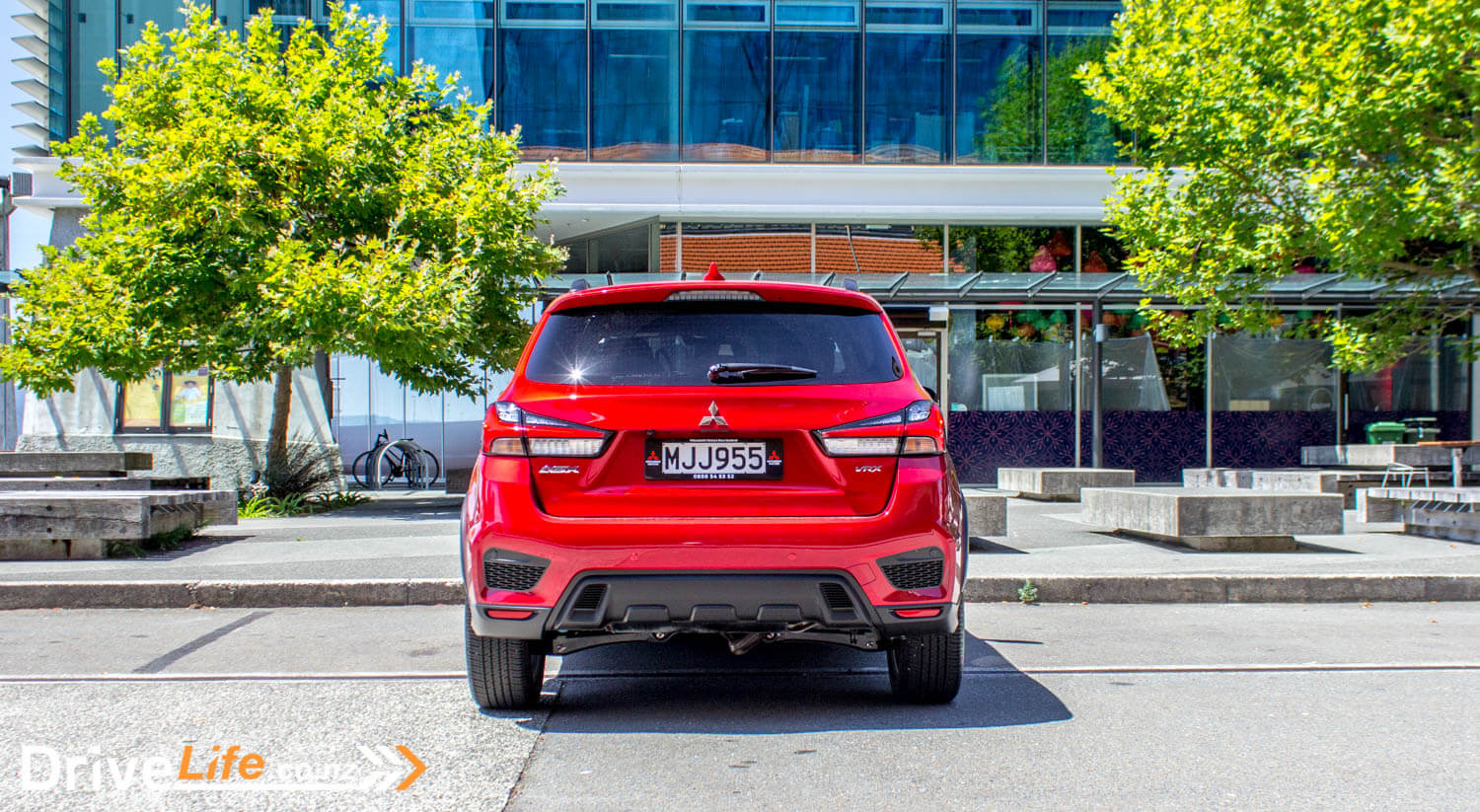
Our test car was finished in Red Diamond, and I’ve got to say it gives Mazda’s Soul Red a run for its money. It looks deep, and it looks good. However, no doubt most people will just go off and buy a grey or silver one. How exciting for them.
Apparently, the design philosophy is “robust and ingenious”, in case you wanted to throw that in while chatting by the coffee machine at work.
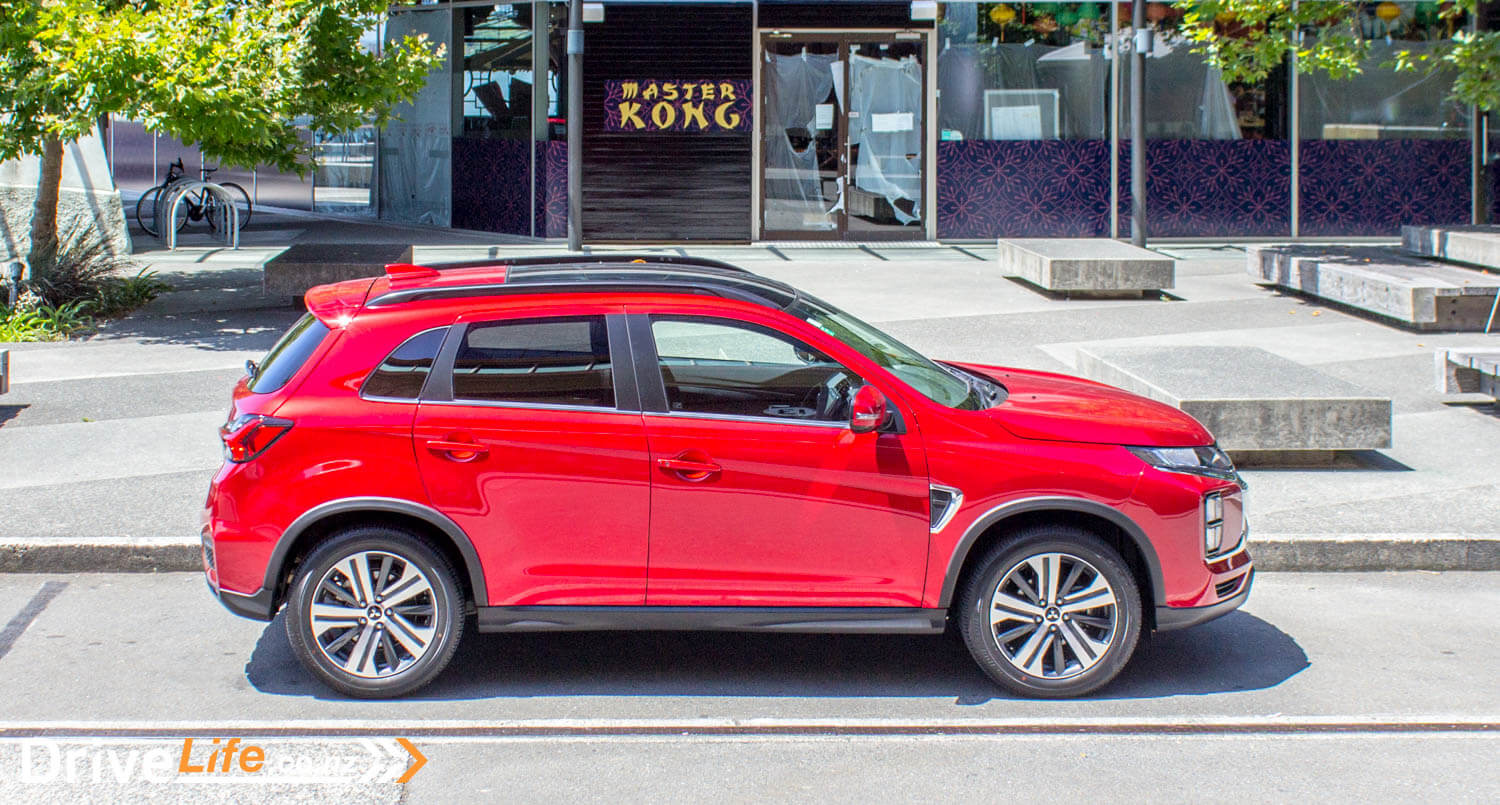
What’s The Interior Like On A 2020 Mitsubishi ASX VRX?
On the VRX models, the interior is all black, and I guess it gives it that expensive look compared to the beige interior of the two lower models. It does make the car unbearably hot when parked up on a sunny day though, and while the VRX has a panoramic sunroof, it doesn’t actually open to let any heat out. At least opening the electric blind does give some natural light into the interior.
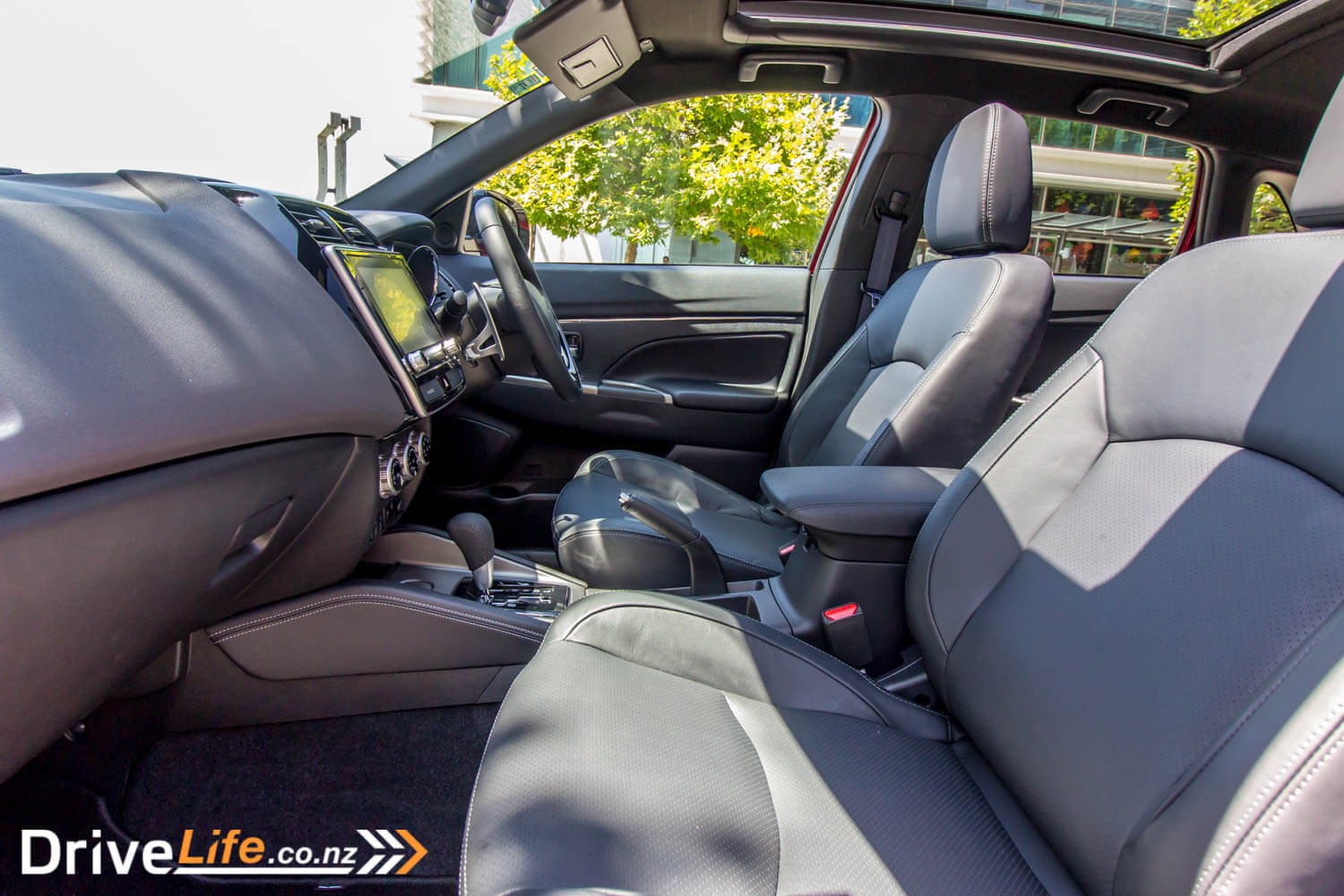
It may be the top-spec model but there’s still quite a few hard plastics inside of an ASX. There are some nice other textures, and your eyes aren’t drawn to the flat, black plastic, so that’s a bonus. The alloy pedals give it a sporty feel, as does the black leather seating. There’s a deep, long cubby in front of the gearshift that I used quite a bit.
I had to have a bit of a laugh; after testing the Eclipse Cross some time ago, I commented then on the almost-vintage heated seat rocker switches that that car has. The new ASX? Chuck in the same heated seat switches from a 1980s Galant. They probably aren’t from a 1980s Galant, but they look like they are. Sure, they’re a minor item, but they look ghastly. I think Mitsubishi needs to go look at some other brands, and check out the heated seat switches that other cars have.
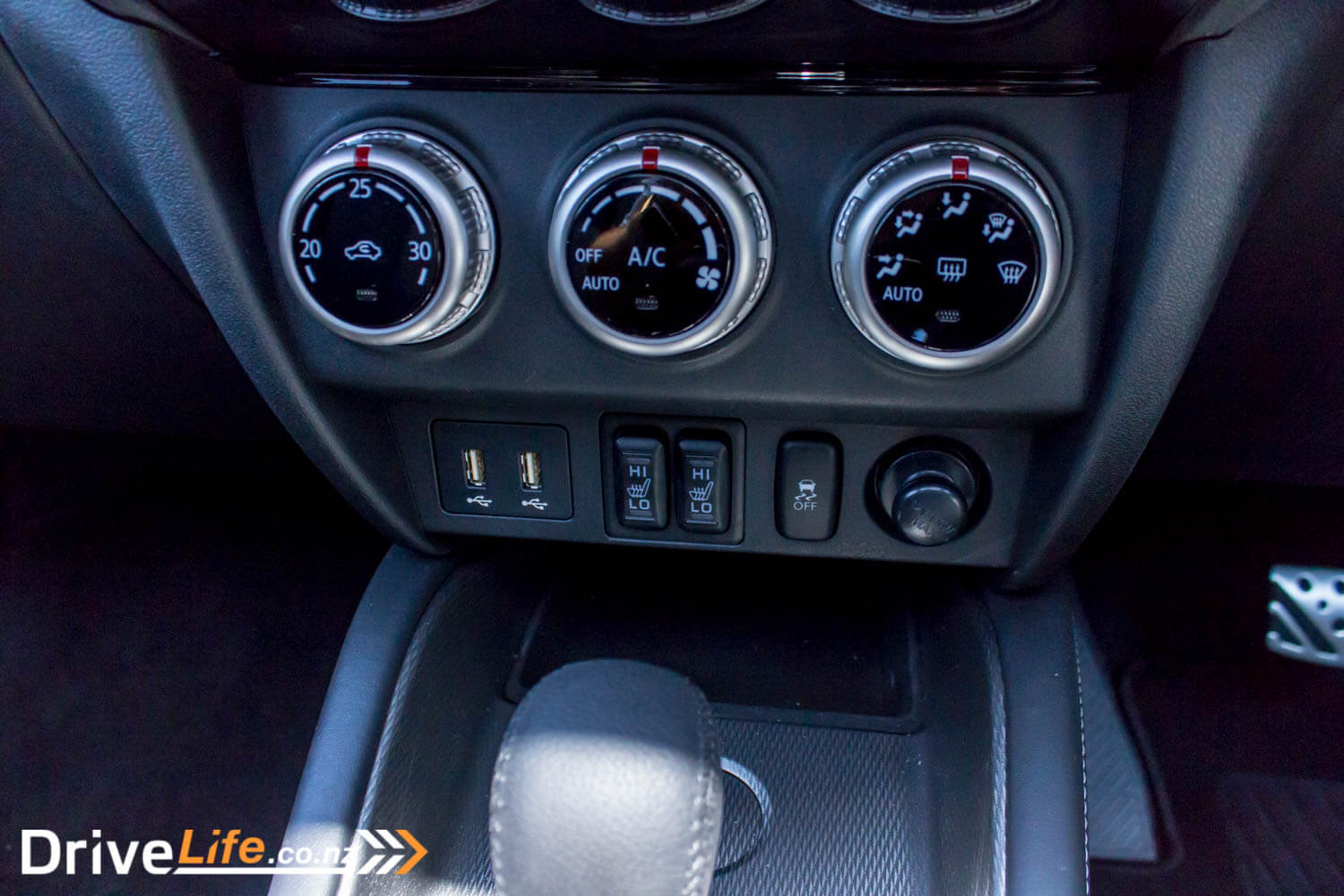
Rear legroom is very good, as is the boot space at 393 litres with the rear seats up. It should make for a very reasonable Daily Driver.
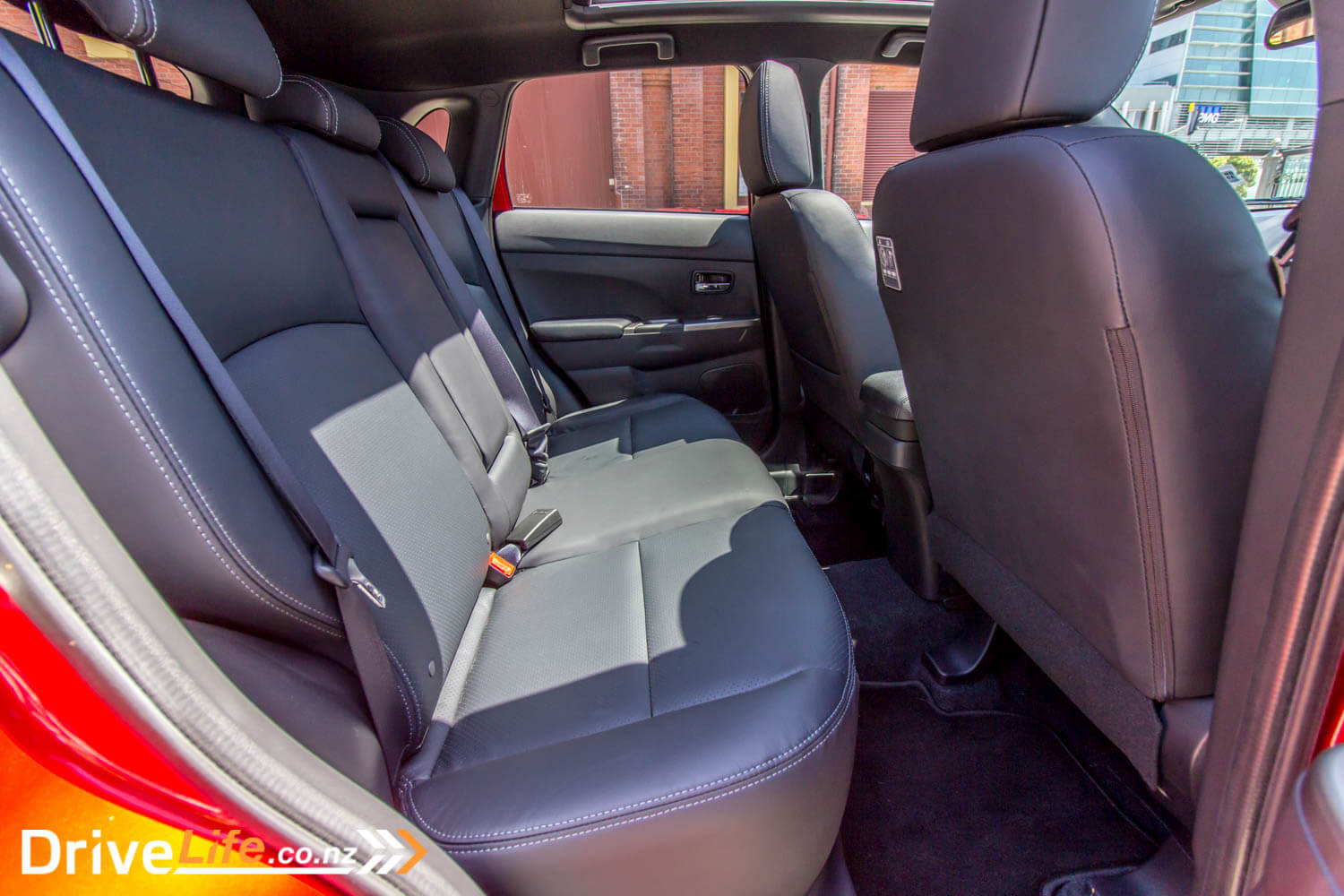
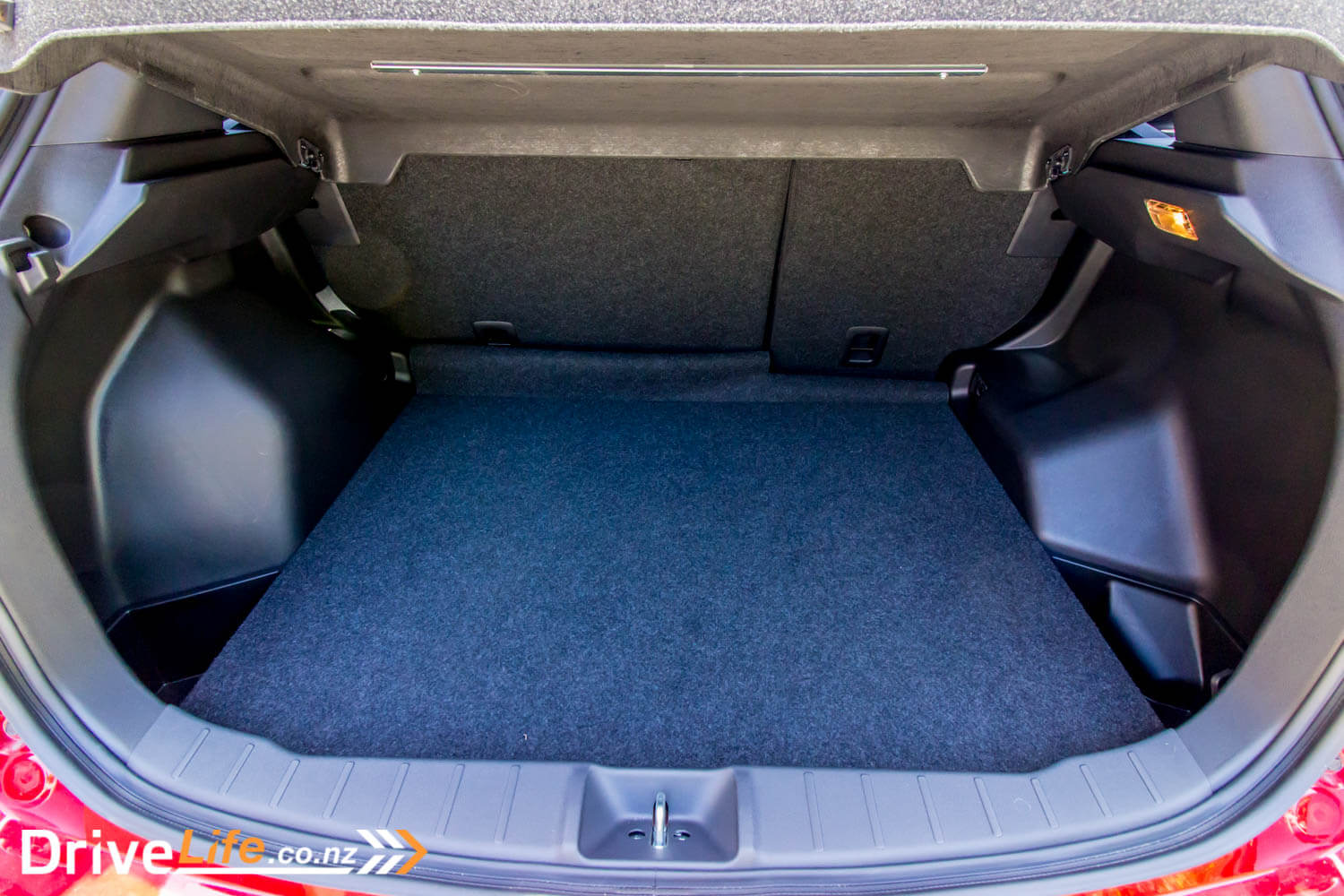
What Does The 2020 Mitsubishi ASX VRX Drive Like?
It’d been a while since I was in an ASX, and to be honest, it wasn’t memorable at all. I do seem to remember it not being the greatest of cars, so I had high hopes for this new model – even with a CVT transmission. Within a minute, I was fine with it. The CVT felt like a normal automatic so far, and performance seemed just fine with that big motor driving it, as you’d expect it to be.
But after a week? Would it still be good?
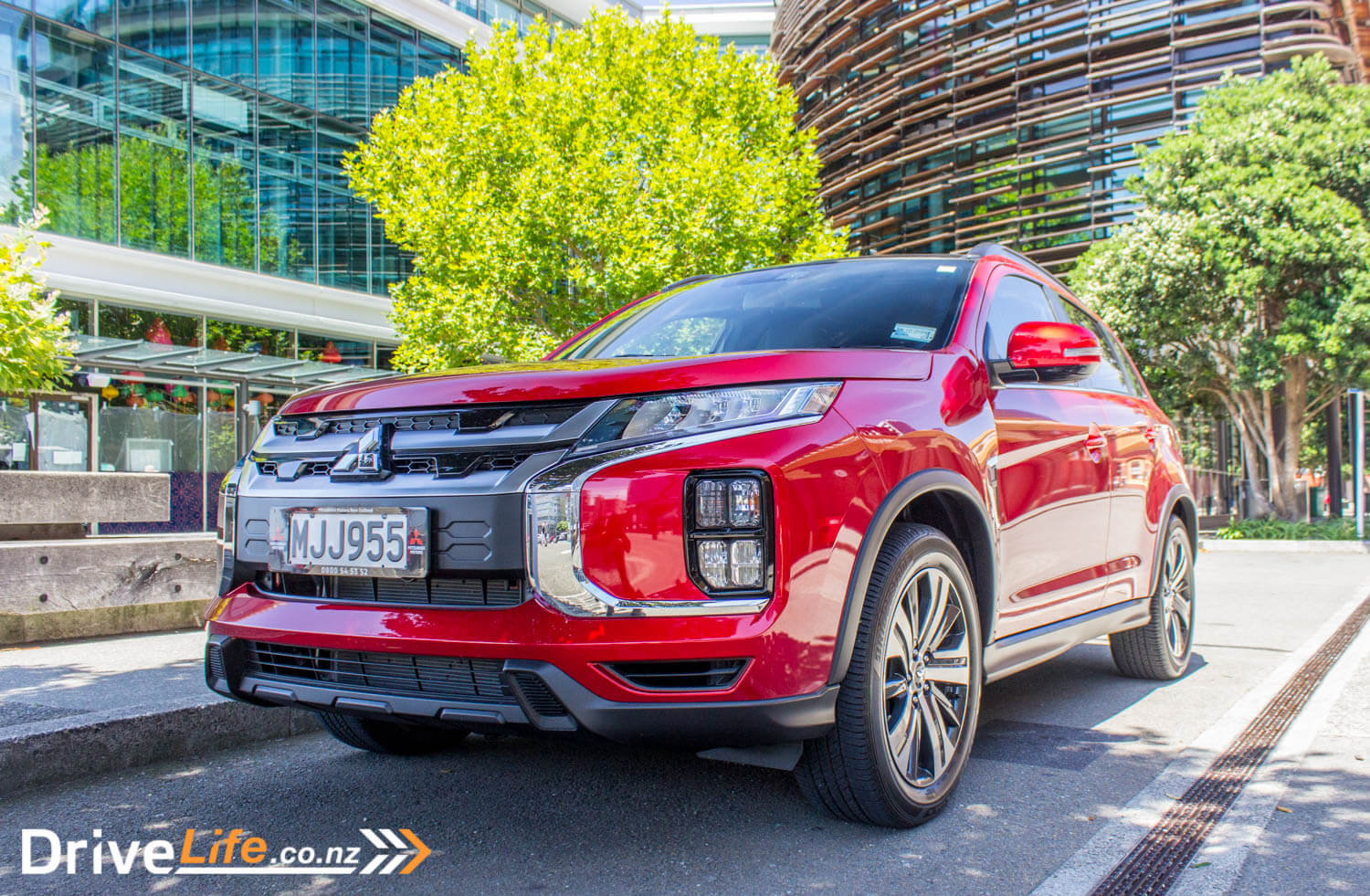
Interesting that there’s no drive modes at all on this car; Not that it needs it, but I can’t remember the last time we tested a car that didn’t let you do something with it, like eco mode. The gear lever has a left-down indent for putting the car in Low ‘gear’, but you can’t change gears using the paddles when it’s in Low – you need to leave it in Drive and use the paddles. Not the end of the world, but sometimes it’s nice to use the lever instead. Well, luckily that’s only sometimes, as the shift lever on the ASX is really low and a long way forward. Sometimes I felt like a drunk Harry Potter with his wand, my hand flailing about trying to find the gear lever when the lights turned green.
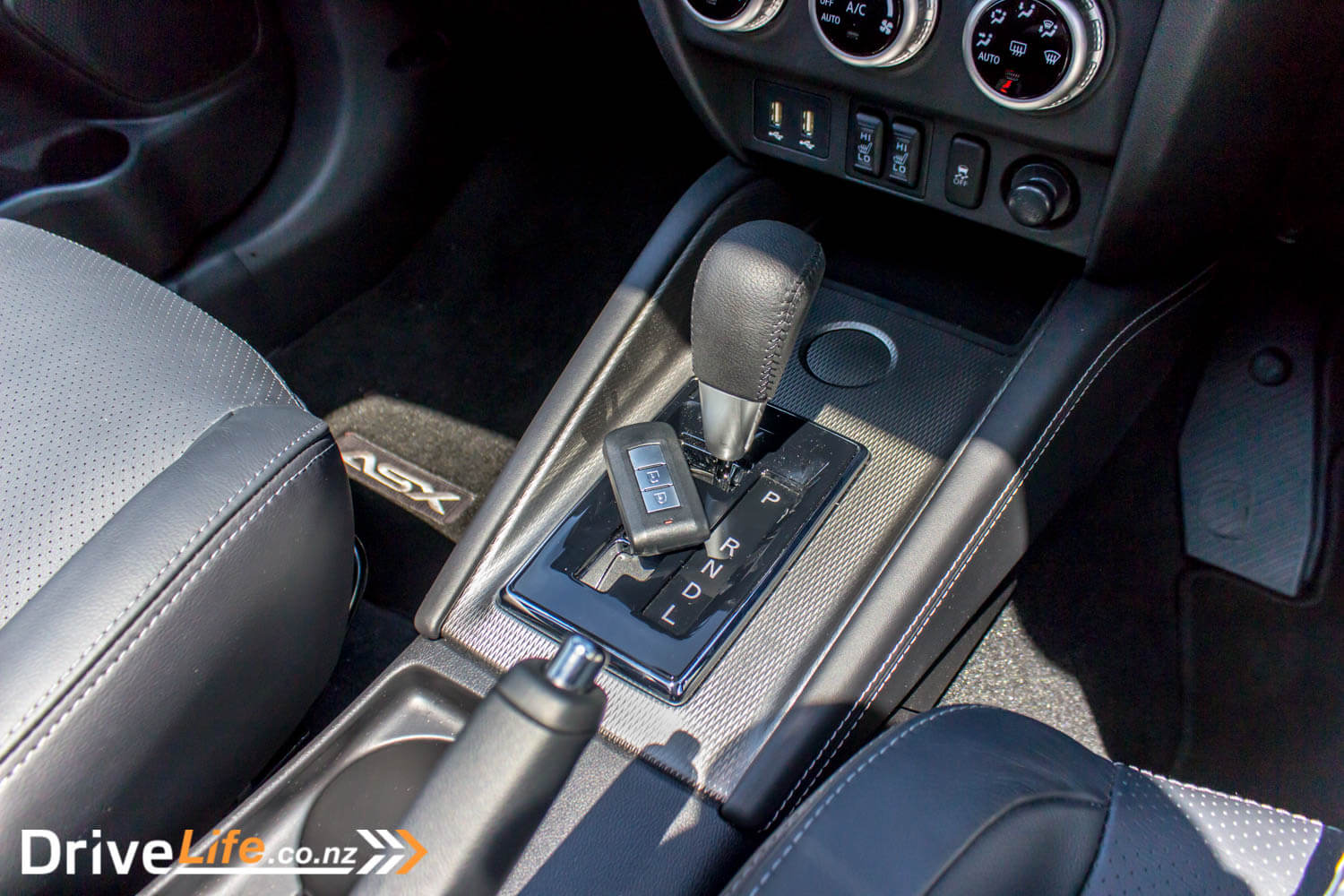
So what about that CVT? It’s no secret, the team at DriveLife prefer a ‘normal’ automatic to a CVT transmission; that ‘CVT flaring’ you get when you mash the gas pedal doesn’t feel or sound good. There’s just lots of engine noise and what feels like not a lot of forward movement. But the ASX? It’s mostly an improvement. That 6-speed stepped mode works quite well; a quick stab of the gas pedal, and the car will drop a ‘gear’ and take off. It feels almost like a normal automatic, and just tootling around at low speeds means it says in CVT mode, and you don’t really notice it.
But – and I hate to use that word – if you do floor it, unfortunately the stepped mode doesn’t come in, and yes you get lots of whirring and engine noise. Such a shame, as this is a time you really expect a CVT that has some sort of a stepped mode to actually use it. The two lower models don’t have any stepped mode, but then most drivers may not notice a CVT transmission anyway.
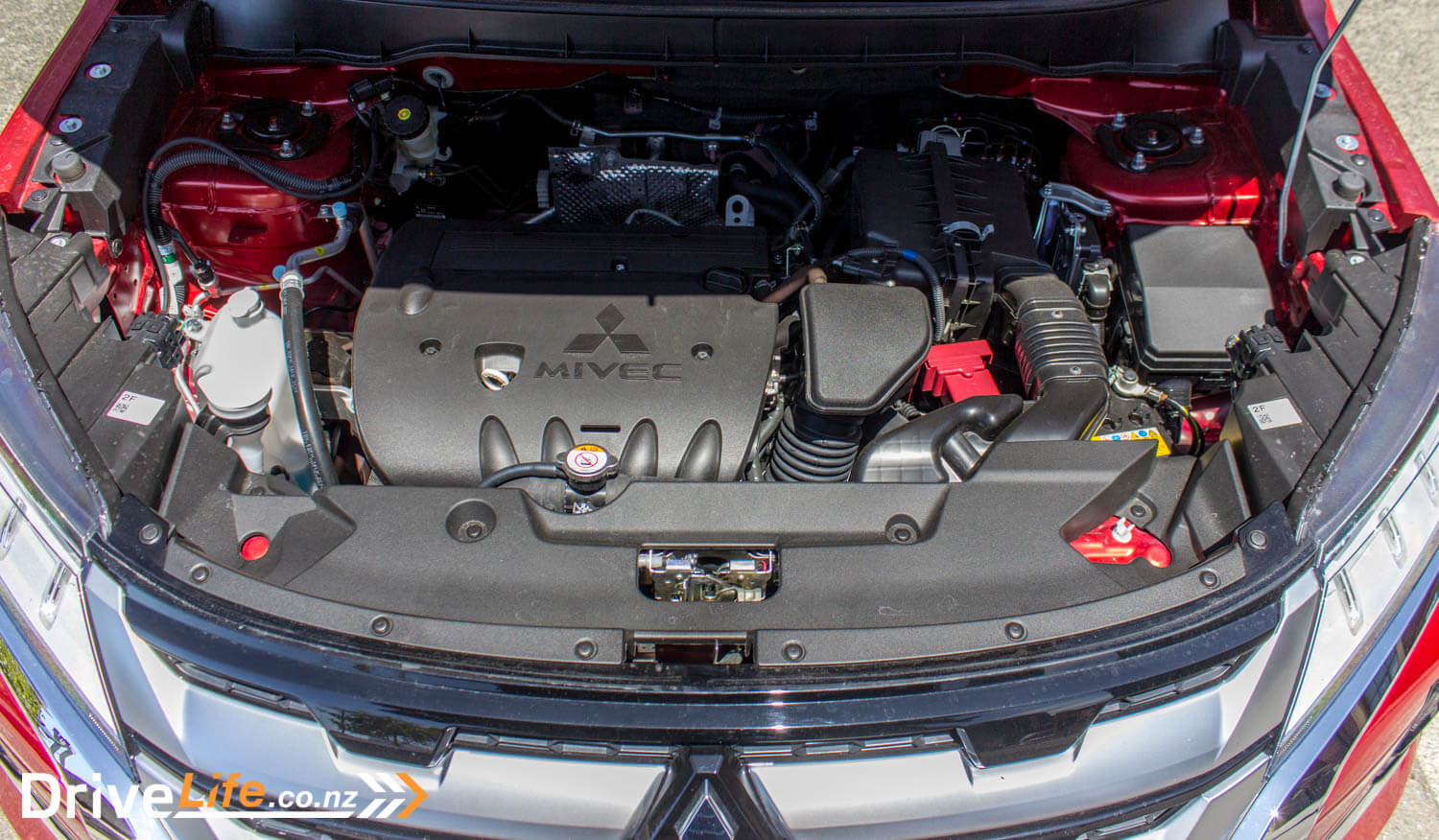
Using the car as a Daily Driver should mean few complaints. Visibility is very good, especially with blind spot monitoring in play, and the light steering and peppy motor help things along. There’s rear parking sensors, and the loading height for the boot is reasonable.
There’s no SatNav in the ASX, but you do have Apple CarPlay and Android Auto capability, so there’s no real need for it.
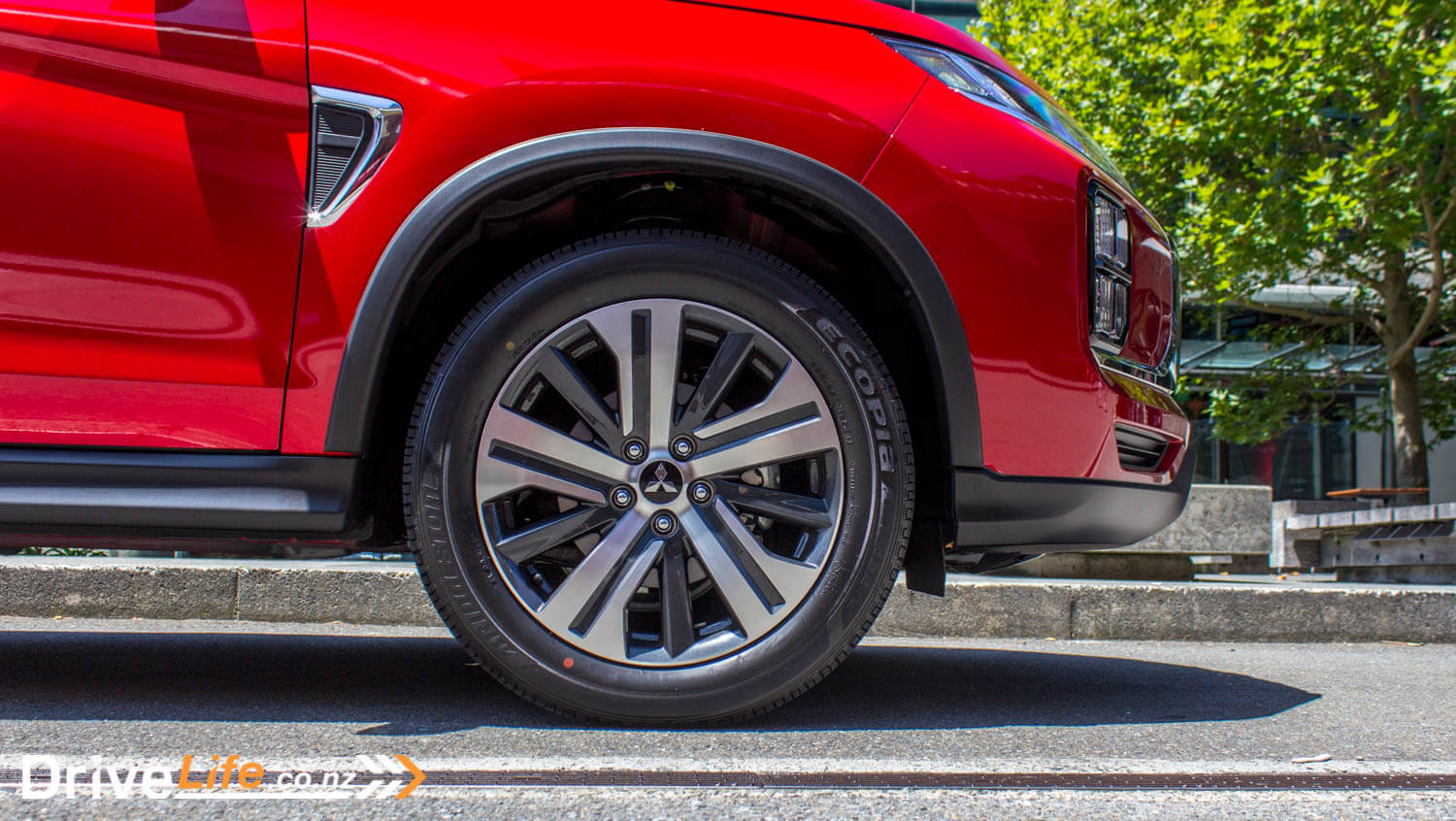
The ASX does have a home screen of sorts on the centre touch screen, but it’s simply massive icons that let you select Audio, or Phone etc. There’s also dedicated buttons for Audio, Phone, and Settings on the bottom edge of the screen.
The home screen itself is really low resolution – it looks very chunky – but it works, and there’s not much lag between screens. There’s very few options that you can change in Settings; we’re used to altering times that certain lights stay on, or how the wipers or door locks work, but the ASX is very basic in this regard.
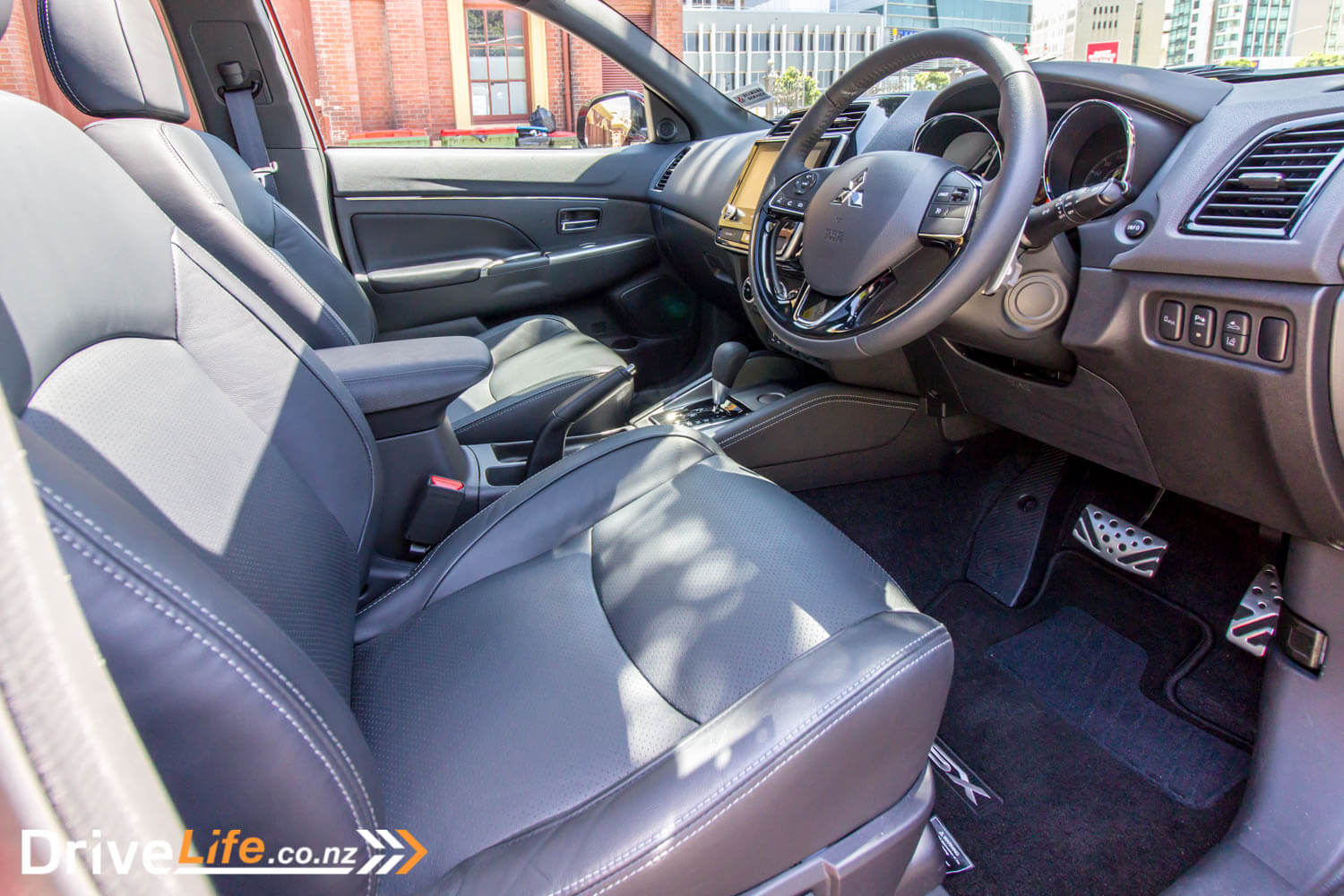
Thankfully, Bluetooth reconnects nearly every time to your phone, so that’s a bonus. The new ASX also has dynamic guidelines for the reversing camera, and having these lines move as you turn is always better than static guidelines.
Below the infotainment system are the AC controls, and I love that Mitsubishi have stuck to three simple dials to control them. Quick and easy. Under the AC controls are those heated seat switches, 2XUSB ports, and a 12-volt socket. There’s no AUX port for the car. The centre console has another 12-volt port for your rear passengers to charge up their phones.
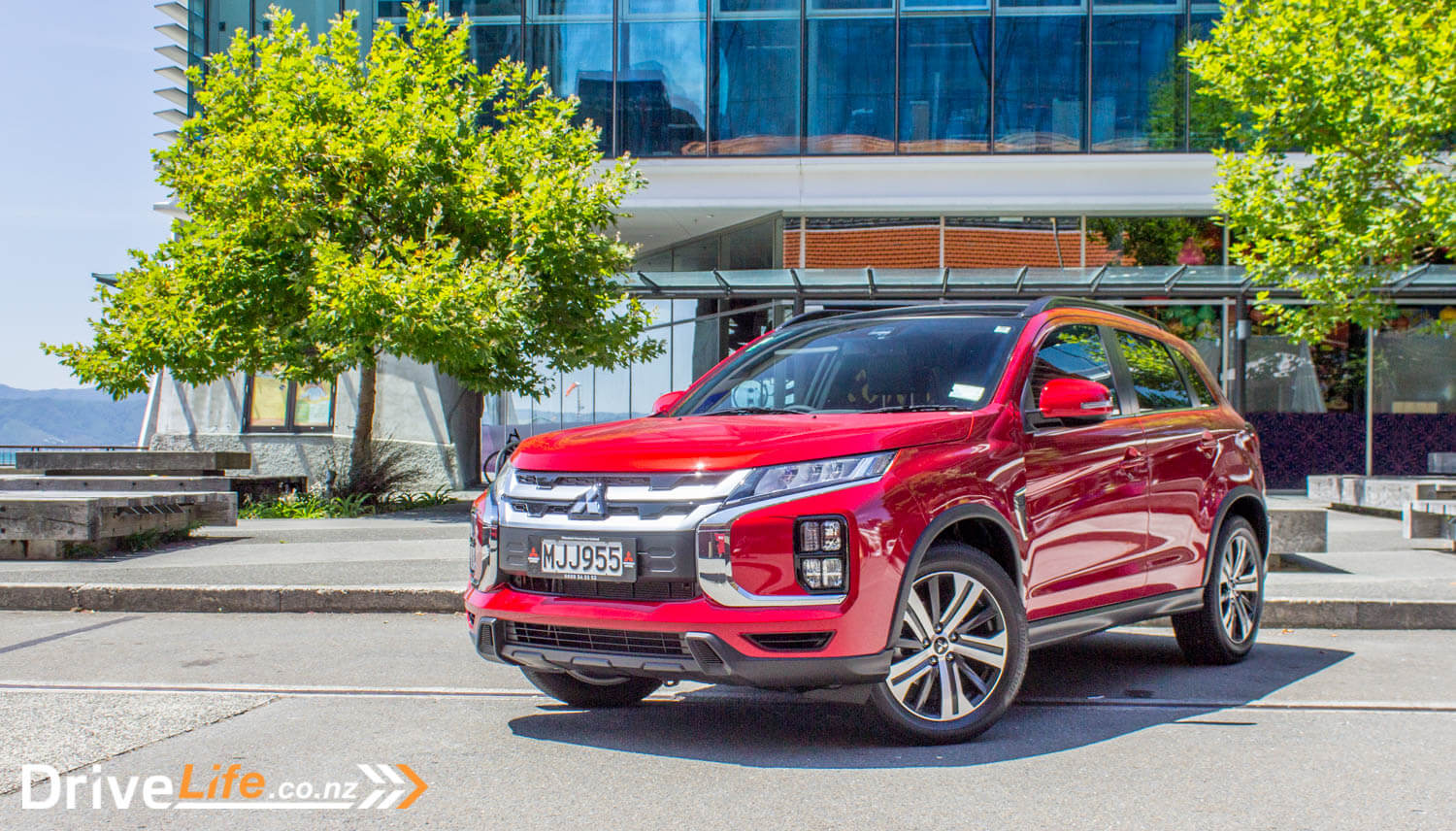
In what I guess is a cost-saving drive, there’s a standard handbrake in the ASX VRX – no fancy electric park brakes here.
In the driver’s seat, the steering wheel feels really big for the car, but I’m happy to say that the steering wheel controls work perfectly. There’s a 4-way rocker switch on the left side for audio, and after a few minutes in the car, I never needed to look at it again. Feel works just fine. It’s exactly the same wheel as on the previous model, and that’s ok – no point changing it for the sake of change.
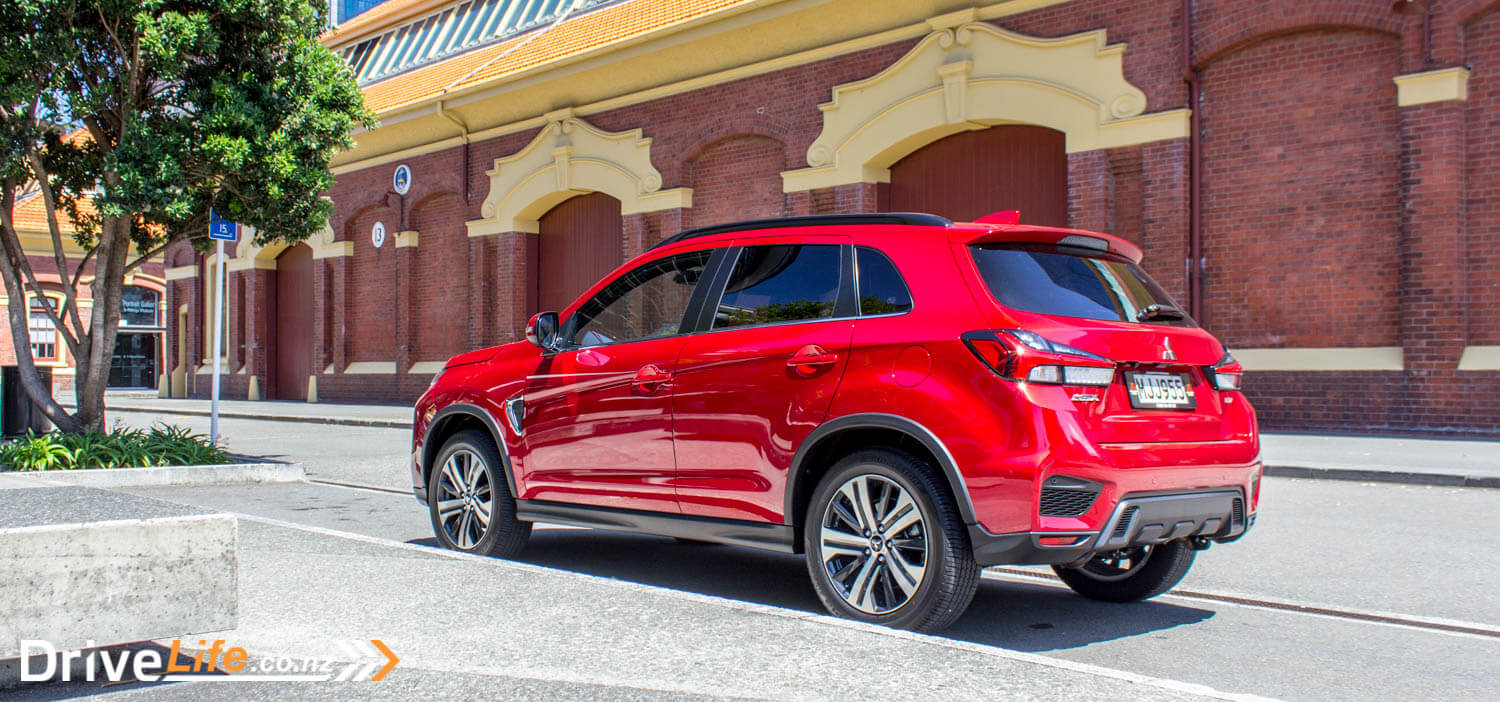
On the right side of the wheel are the cruise control buttons. A few omissions here; there’s no speed limiter, and there’s no adaptive cruise control. I really expected the top-spec model at least to have adaptive cruise. Hopefully we’ll see this on the next update – and I also hope they’ll add in a readout to show the speed your cruise control is set to. We rarely see cars without this now, so this really stood out.
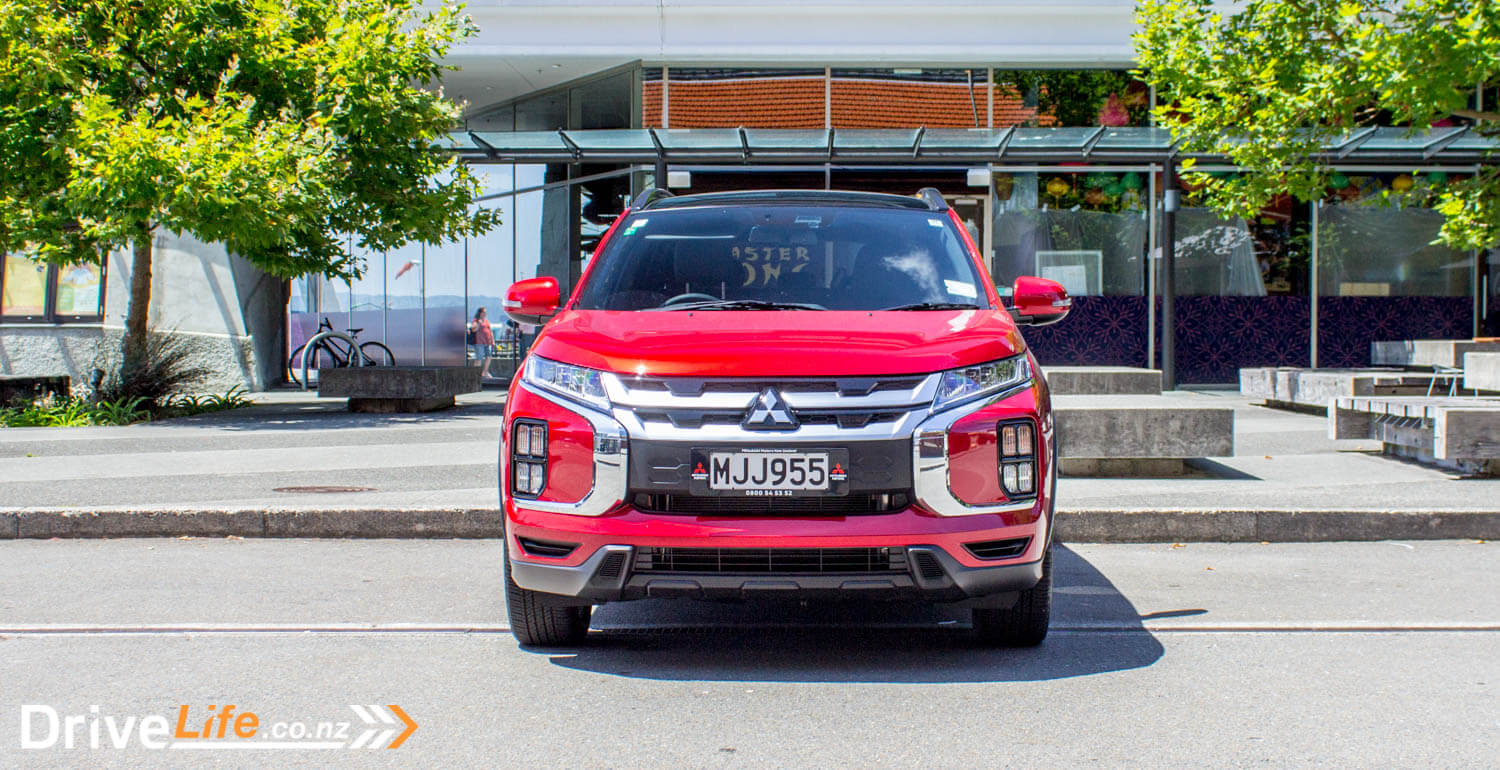
The driver’s information display is fairly basic, with just a couple of trip meters and fuel consumption available. Would most drivers care? Likely not. One more omission that hurt though was a lack of a digital speedo. With a 240km/h speedo on the right side of the instruments, the digits are fairly busy and a little tricky to read in a hurry. That’s where a digital speedo comes in. Next time please, Mr Mitsubishi.
On the motorway, there’s a little tyre and road noise, but it’s really very good – it’s not a bad motorway commuter. The 2.4 motor is very smooth and generally quiet and unobtrusive. It’s only when it hits the hills it starts to be more vocal, but it’s never really bad. Certainly not like the Toyota RAV4 we recently tested.
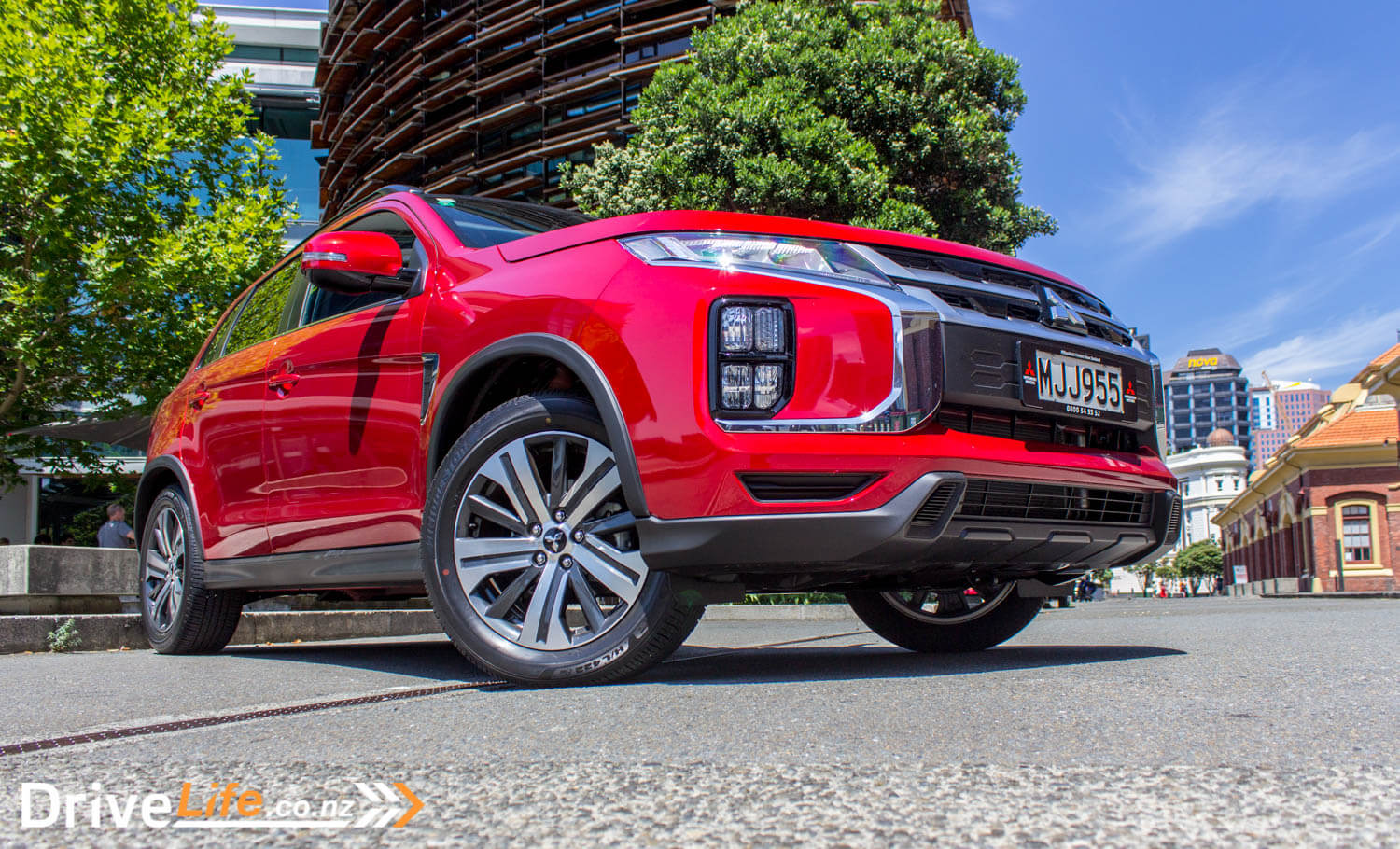
The ride is fairly firm, and can get a little jiggly around town. I didn’t get a chance to chuck the ASX around on a windy road. Likely the worst thing about using the car on a windy road would be the seats; there’s very little side support, and even around town I felt myself sliding left and right.
Fuel economy was a highlight for me; Mitsubishi suggest a combined rating of 7.9L/100km, but over 500km of mixed driving, I got 7.4. A win right there, and the first time I’ve beaten the manufacturer’s rating for quite a while. I see in Ken’s review of the previous 2.0-litre model, he got almost 9L/100km, so this seems like a case of a bigger motor being more economical.
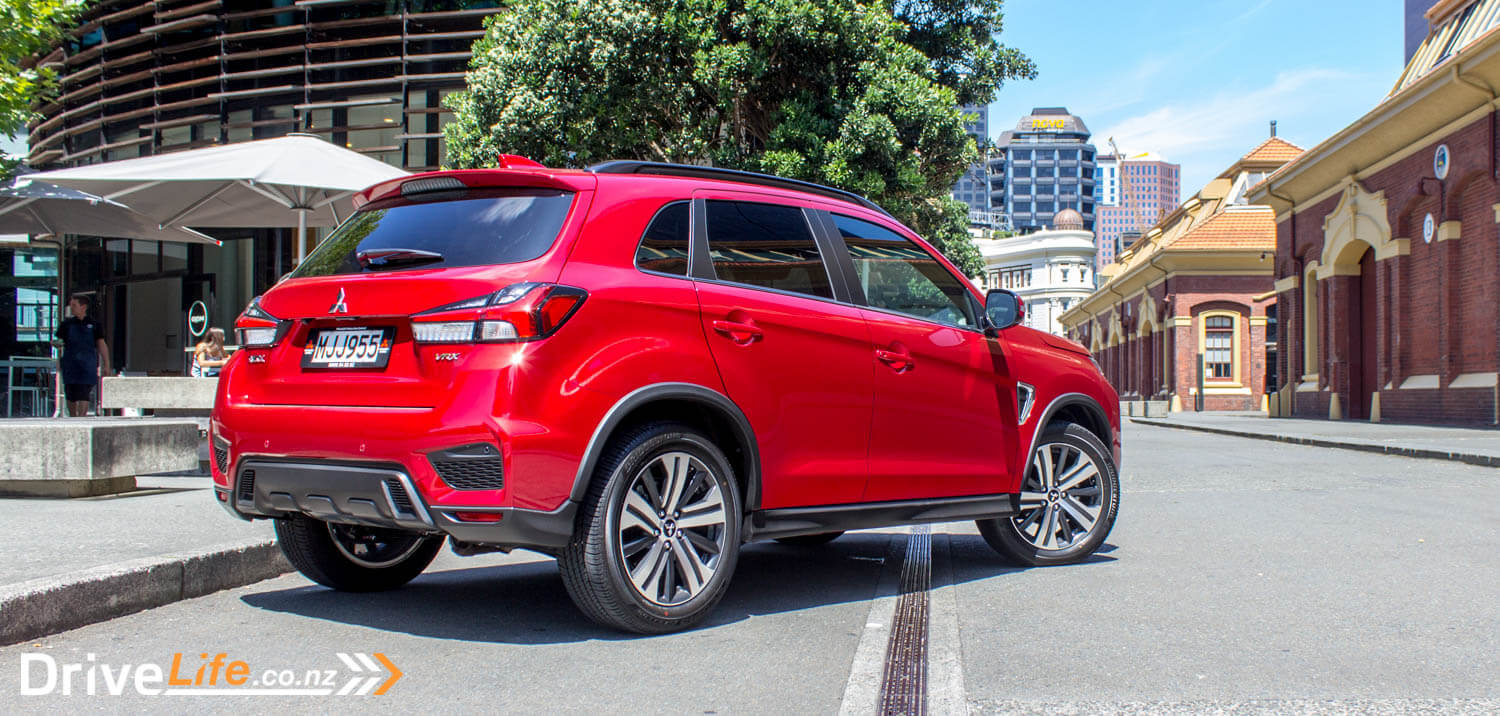
What’s The Competition For The 2020 Mitsubishi ASX VRX?
| Brand/Model | Engine | Power/Torque kW/Nm | Cargo capacity, litres | Fuel L/100km | Price |
| Kia Seltos LTD FWD | 2.0-litre, 4-cylinder petrol | 110/180 | 433 | 6.8 | $42,990 |
| Hyundai Kona Limited FWD | 2.0-litre, 4-cylinder petrol | 110/180 | 332 | 7.2 | $41,990 |
| Mazda CX-3 Limited FWD | 2.0-litre, 4-cylinder petrol | 110/195 | 264 | 6.3 | $40,195 |
| Nissan Juke Turbo AWD | 1.6-litre, 4-cylinder turbo | 140/240 | 207 | 7.4 | $40,250 |
| Holden Trax LTZ FWD | 1.4-litre, 4-cylinder petrol turbo | 103/200 | 356 | 6.7 | $36,990 |
| Mitsubishi ASX VRX FWD | 2.4-litre, 4-cylinder petrol | 125/225 | 393 | 7.9 | $34,990 |
| Haval H6 Lux FWD | 2.0-litre, 4-cylinder petrol turbo | 145/315 | N/A | 9.6 | $34,990 |
| Peugeot 2008 GT Line FWD | 1.2-litre, 3-cylinder petrol turbo | 81/205 | 410 | 4.8 | $34,990 |
| Suzuki S-Cross Prestige FWD | 1.4-litre, 4-cylinder petrol turbo | 103/220 | 440 | 5.9 | $33,990 |
| Honda HR-V Sport NT+ FWD | 1.8-litre, 4-cylinder petrol | 105/172 | 437 | 6.7 | $32,990 |
| Ssangyong Tivoli Limited FWD | 1.6-litre, 4-cylinder petrol turbo | 94/160 | N/A | 7.2 | $31,990 |
What’s The Pros and Cons For The 2020 Mitsubishi ASX VRX?
| Pros | Cons |
| Design Steering wheel controls CVT generally pretty good Overall quietness, smoothness 10-year warranty Fuel economy Rear legroom | CVT flaring on full throttle No adaptive cruise control No digital speedo Lack of side support on front seats Jiggly ride at times |
What’s The Verdict For The 2020 Mitsubishi ASX VRX?
Rereading my review, it sounds like I didn’t like a lot of things on the ASX VRX. But after a week, I’d grown to like the car. For use as a commuter/daily driver, it does brilliantly.
For most buyers of this car, they are going to be happy with it. It does what it says on the box, and that’s all most people want.
Aside from the lack of adaptive cruise control and a digital speedo, I’d be more than happy with the ASX VRX as a Daily Driver/family wagon.

2019 Mitsubishi ASX VRX – Specifcations
| Vehicle Type | Compact SUV |
| Starting Price | $34,990 |
| Price as Tested | $34,990 |
| Engine | 2.4-litre, four-cylinder petrol |
| Transmission | CVT with 6-speed sports mode and paddle shifters |
| Power, Torque kW/Nm | 125/225 |
| Spare Wheel | Space saver |
| Kerb Weight, Kg | 1,390 |
| Length x Width x Height mm | 4365x1810x1640 |
| Cargo Capacity, litres | 393/1143 |
| Fuel Economy, L/100km | Advertised Spec – combined – 7.9 Real-World Test – combined – 7.4 Low Usage: 0-6 / Medium Usage 6-12 / High Usage 12+ |
| Fuel tank capacity, litres | 63 |
| Towing Capacity Kg, unbraked/braked | 750/1300 |
| Turning circle, metres | 10.6 Small: 6-10m / Medium 10-12m / Large 12m+ |
| Warranty | 10 year, 160,000km drivetrain warranty 5 year 130,000km new car warranty 5 years Premium Roadside Assist |
| ANCAP Safety Ratings | 5 Star |
